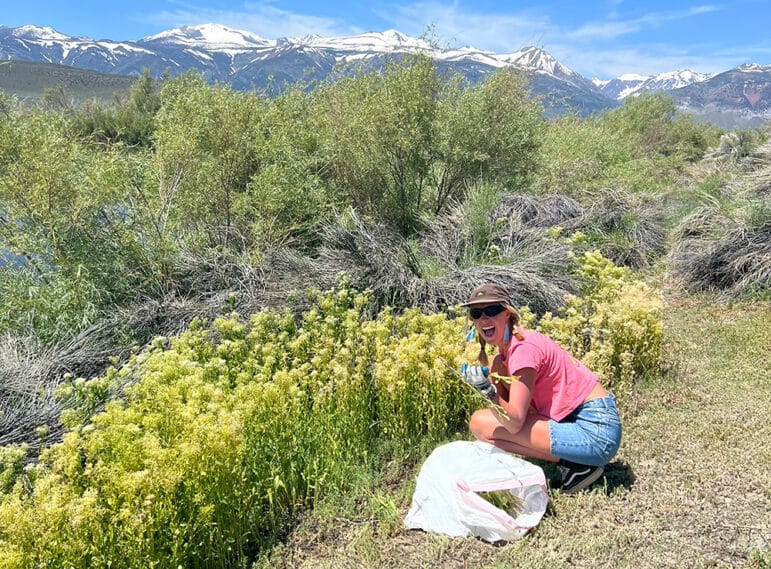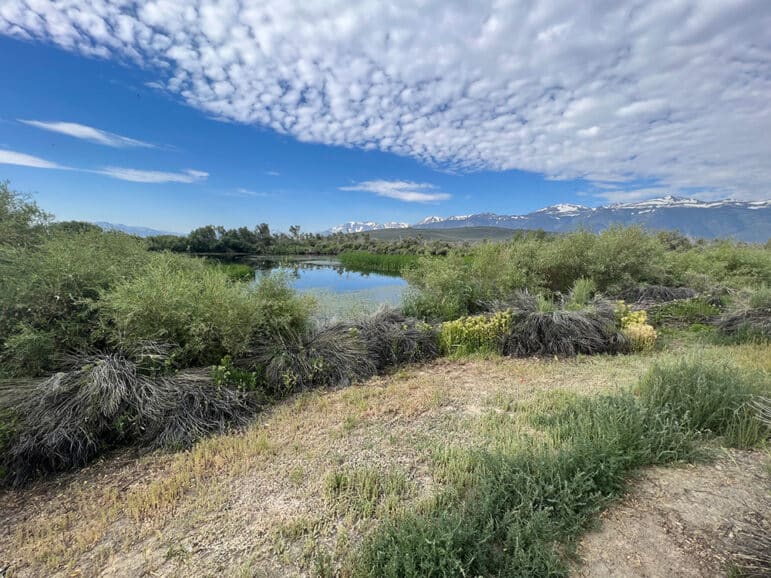
The Mono Basin is home to an abundance of stunning native plant species, from riparian habitats to alkali-sink scrub. Unfortunately, there are also a few guests who have overstayed their welcome.
In the Mono Basin, and much of the world, invasive species have been transported to new habitats steadily as a result of globalization. Invasive species can include anything from frogs to flowers and are non-native species that can be harmful to the health of ecosystems. When these non-native plants and animals establish themselves in our local ecosystems, they out-compete and challenge species that have evolved specifically to live here. Invasive plants affect ecosystems by degrading the soil, removing crucial habitat, and can even lead to the extinction of native species.
Here at the Mono Lake Committee, we have had a long-standing invasive plant program designed to not only monitor what species are here, but to also remove high priority species that pose a significant threat to our unique area. Removing these plants is a critical component in restoration work, as it is important to give native species room to thrive and repopulate in a restored environment.

Our most recent focus in the invasive plant program has been removing a large patch of hoary cress, Lepidium draba, from the DeChambeau Ponds restoration site. Hoary cress is a perennial herb found commonly in riparian areas and is invasive in the state of California. One plant can produce anywhere from 1,200 to 4,800 seeds, making it incredibly hard to reduce the seed bank once a larger patch has taken root. Hoary cress is a highly competitive species that easily displaces native vegetation, diminishing ecological health.
Since mid-June groups of Committee staff, Lee Vining locals, and DeChambeau Creek Foundation staff have been heading out to the ponds armed with clippers and gloves in order to remove as much of the hoary cress as possible. Over these weeks, we saw the large patch shrink as people carefully removed the plants, root and all, before bagging them and whisking the plant matter away. Because of the high concentration of seeds on each plant, the plants need to be handled with care and clipped at the stem to delicately remove the flower top and bag it before yanking out the root. Hoary cress can grow back from exceedingly small root fragments left in the soil, so attention to detail was crucial. The crews did an amazing job at moving swiftly with care, as we knew we would only have a few weeks before the plants began seeding and removal would no longer be productive. We managed to clear the pathways and a large chunk of the patch, so that seed dispersal will be minimal in the coming months. Overall, the team removed approximately 130 pound of hoary cress, marking a successful end to the hoary cress removal season.



Removing invasive species is a crucial part of restoration work. However, monitoring and follow-up helps to ensure that the work we are doing is effective on both a short-term scale and also in the long run. Using surveying methods, we will continue to monitor the DeChambeau Ponds site along and plan for future hoary cress removals that will likely be needed.
Top photo by Fiona Travers.
